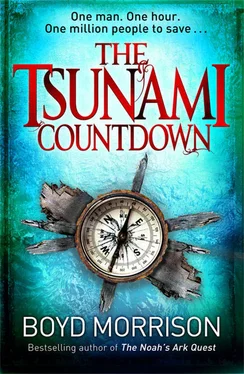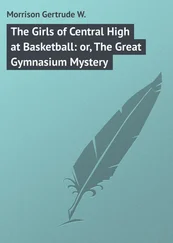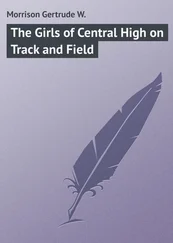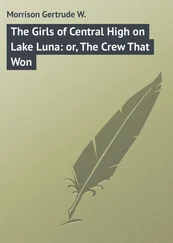“I read you, Seabiscuit ,” she said. “I just looked out the window. The tide is going way out.”
“Tasha, that’s not the tide! A tsunami is coming! Get out of there!”
“Oh my God! What should I do?”
“Get to the highest point you can.”
“What about you?”
“We’re okay. We’re in deep water. Tsunamis only get big in shallow water.”
Tasha’s panicked voice came back. “But there’s nowhere to go!”
Harold knew she was right. Not only was the highest point on the island only twelve feet above sea level, there was only a smattering of two-story buildings on the island, and none near the dive shop.
“Then climb a tree!”
“It’s too late!” Harold said and pointed.
Gina screamed. “Look!”
Even faster than it had rushed out, the water began pouring back toward the beach. The small figures Harold could see with the binoculars ran back toward the island. Some of them were caught by the incoming wave even before they reached the trees.
But the image between him and the island grew more terrifying. The water rose until it completely obscured even the tallest tree. Harold realized it would be only seconds before the mammoth wave covered the island.
A hiss of static issued from the radio. Tasha was gone.
Harold, wide-eyed, could only shake his head and mutter to himself.
“I guess we should have gone to Hawaii.”
9:31 a.m .
The Pacific Tsunami Warning Center was tiny, so the walking portion of the Japanese school tour went quickly. Kai took them into the conference room where the children could sit. The sixth graders had been listening quietly, the teacher translating while Kai spoke. Kai knew the Japanese language of his father’s ancestry about as well as he knew the Italian language of his mother’s, which meant that he could order sushi or rigatoni and that was about it. Japan had always been particularly susceptible to tsunamis, and the videos from Indonesia, Sri Lanka, and Thailand showing the tsunami carrying away people, buildings, and cars had only added to the students’ curiosity. Kai capitalized on their interest by telling stories about tsunamis that had hit Hawaii in the past.
“Do you remember me telling you about the tsunami that struck Hilo in 1946?” he said.
A couple of kids nodded. Kai always started the tour off by telling them how the Pacific Tsunami Warning Center was founded. On April 1, 1946, an earthquake measuring 8.1 on the Richter scale was generated in the Aleutian Islands. No one in Hawaii knew that it had happened, except for a few seismologists. Five hours later, the first of a series of waves hit the northern shore of the Big Island. Hilo, on the northeast side of the island, was the only large city facing that direction. Even when people got word that a tsunami had struck, many thought it was an April Fool’s Day prank. But it wasn’t a joke. More than 150 Hawaiians perished that day.
Kai went on with the story: “One of the common misconceptions about tsunamis is that they consist of one huge wave. In fact, tsunamis typically come in a series of waves created by the earthquake-displaced water rebounding up and down, with the third or fourth wave in the series usually the biggest. The waves alternate with troughs that are just as low as the waves are high, which is why the water recedes from the beach before every wave. The energy of each wave extends to the bottom of the ocean, accounting for the long periods between waves. Because people aren’t aware of these tsunami behaviors, they often put themselves in unnecessary danger.
“There was a school in a town called Laupahoehoe to the northwest of Hilo,” he added. “In fact, the kids at the school were just about your age, and they saw an actual tsunami.”
That brought a gasp from the kids.
“I’ll even show you a couple of pictures from the event.” Kai clicked on the conference room projector, which was linked to his laptop. The first photo showed the schoolhouse as it had looked before the tsunami, perched only one hundred feet from the shore on a beautiful beach with swaying palm trees. Several smaller houses surrounded it.
“This is where the kids went to school. Imagine being able to go to the beach for recess!” The children murmured at that thought.
“When the second wave of the tsunami arrived at nine a.m., the kids were already in class. None of them had even seen the first small wave. A few of them who could see out the window noticed the receding water, and the rest of the children jumped up and ran out to see what was going on, with a schoolteacher following them. Some of them even ran into the bay to look at the exposed seafloor.
“As they were playing around, the water started to come back in. It just seemed like a fast-rising tide at first, so they weren’t too worried as they ran back toward the schoolhouse. But the next thing they saw was a massive wave rushing across the bay at forty miles an hour.” Kai saw some quizzical looks and realized that he was accustomed to giving tours to Americans. Japan used kilometers. “That’s about seventy kilometers per hour.” He pointed at a girl sitting near him. “How fast do you think you can run?”
The girl shrugged and spoke unexpectedly good English. “I don’t know.”
“Do you think you could run seventy kilometers per hour?”
Her face turned crimson. She shook her head.
“You’re right,” Kai said. “Actually, the fastest man in the world can only run about forty kilometers per hour, and even then he can only keep it up for a hundred meters.” He winked at the girl. “Next time you’re on the sidewalk, try to outrun a car that’s passing next to you on the road. If you can’t outrun that car, you can’t outrun a tsunami, either. Now, where was I?”
A boy courteously raised his hand. Kai nodded, and the boy spoke in a measured voice. “The wave approached.” Apparently their English was much better than Kai’s Japanese.
“Right. Well, despite what you may have seen in the movies, a tsunami is seldom a big curling wave like the ones you see on the Banzai Pipeline, the popular surfing spot on the North Shore. Instead, a tsunami is usually a churning mass of white foam that we call a bore.” Kai clicked to the next slide. It showed a wave approaching the beach that was the height of the trees. “This is a picture from Phuket, Thailand, during the Asian tsunami. As you can see, it looks a lot like the waves you see in a river rapid. This bore smashes everything in its path and carries the wreckage along with it, so that you have not only the water coming at you but also boats, trees, cars, pieces of buildings, and anything else it has scooped up.
“Now, I’ve heard some kids come through here and say that if we ever got a real tsunami coming this way, they’d like to try to surf that big mama.” Some of the kids laughed and nodded. “Oh, you think you would too? Let me show you video of a relatively small tsunami coming into shore in a bay in Alaska.”
Kai clicked on the icon, and the screen showed a cove with several fishing boats and a tiny village perched on the shore to the left. The jittery camera was held by an amateur videographer standing on a cliff. From the right, a white froth about fifteen feet high rushed toward the shore. The man holding the camera yelled something incomprehensible just as the wave smacked into a boat, immediately capsizing it. Other boats got caught in the onslaught as the wave swept the wreckage toward the shore. No one was on the boats, but small figures on the shore could be seen scrambling for higher ground. They all rushed to the peak of a small hill just as the wave crashed along the shore, washing over and through the buildings. One of the buildings collapsed.
Читать дальше












